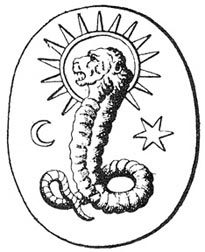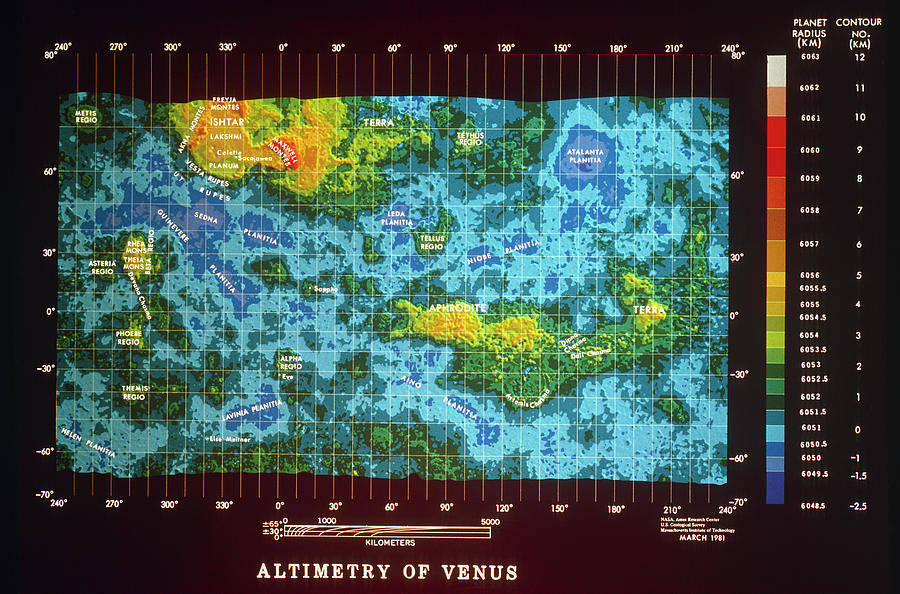|
Ogdoad (Gnosticism)
The concept of an Ogdoad (Greek language, Greek: ὀγδοάς) appears in Gnosticism, Gnostic systems of the early Christian era, and was further developed by the theologian Valentinus (Gnostic), Valentinus (''ca''. 160 AD). The 8, number eight plays an important part in Gnostic systems, and it is necessary to distinguish the different forms in which it appeared at different stages in the development of Gnosticism. The earliest Gnostic systems included a theory of seven heavens and a supercelestial region called the Ogdoad. Astronomical theories had introduced the concept of seven Celestial spheres, planetary spheres with an eighth above them, the sphere of the fixed stars. In the Valentinianism, system of Valentinus, the seven heavens, and even the region above them, were regarded as but the lowest and last stage of the exercise of creative power. Above them was the Pleroma, where were exhibited the first manifestations of the evolution of subordinate existence from the great F ... [...More Info...] [...Related Items...] OR: [Wikipedia] [Google] [Baidu] |
Greek Language
Greek (, ; , ) is an Indo-European languages, Indo-European language, constituting an independent Hellenic languages, Hellenic branch within the Indo-European language family. It is native to Greece, Cyprus, Italy (in Calabria and Salento), southern Albania, and other regions of the Balkans, Caucasus, the Black Sea coast, Asia Minor, and the Eastern Mediterranean. It has the list of languages by first written accounts, longest documented history of any Indo-European language, spanning at least 3,400 years of written records. Its writing system is the Greek alphabet, which has been used for approximately 2,800 years; previously, Greek was recorded in writing systems such as Linear B and the Cypriot syllabary. The Greek language holds a very important place in the history of the Western world. Beginning with the epics of Homer, ancient Greek literature includes many works of lasting importance in the European canon. Greek is also the language in which many of the foundational texts ... [...More Info...] [...Related Items...] OR: [Wikipedia] [Google] [Baidu] |
Panarion
In early Christianity, early Christian heresiology, the ''Panarion'' (, derived from Latin , meaning "bread basket"), to which 16th-century Latin translations gave the name ''Adversus Haereses'' (Latin: "Against Heresies"), is the most important of the works of Epiphanius of Salamis. It was written in Koine Greek beginning in 374 or 375, and issued about three years later,Williams, Frank; translator. "Introduction". The Panarion of Epiphanius of Salamis, Book I (Sects 1-46)'. 1987. (E.J. Brill, Leiden) . as a treatise on heresy, heresies, with its title referring to the text as a "stock of remedies to offset the poisons of heresy." It treats 80 religious sects, either organized groups or philosophies, from the time of Adam to the latter part of the fourth century, detailing their histories, and rebutting their beliefs.Long, G. ed. ''The penny cyclopædia''. Society for the diffusion of useful knowledge. 1833. p 477. The ''Panarion'' is an important source of information on the Jewis ... [...More Info...] [...Related Items...] OR: [Wikipedia] [Google] [Baidu] |
Contra Celsum
''Against Celsus'' ( Greek: Κατὰ Κέλσου, ''Kata Kelsou''; Latin: ''Contra Celsum''), preserved entirely in Greek, is a major apologetics work by the Church Father Origen of Alexandria, written in around 248 AD, countering the writings of Celsus, a pagan philosopher and controversialist who had written a scathing attack on Christianity in his treatise ''The True'' ''Word'' (Λόγος Ἀληθής, ''Logos Alēthēs''). Among a variety of other charges, Celsus had denounced many Christian doctrines as irrational and criticized Christians themselves as uneducated, deluded, unpatriotic, close-minded towards reason, and too accepting of sinners. He had accused Jesus of performing his miracles using black magic rather than actual divine powers and of plagiarizing his teachings from Plato. Celsus had warned that Christianity itself was drawing people away from traditional religion and claimed that its growth would lead to a collapse of traditional, conservative valu ... [...More Info...] [...Related Items...] OR: [Wikipedia] [Google] [Baidu] |
Origen
Origen of Alexandria (), also known as Origen Adamantius, was an Early Christianity, early Christian scholar, Asceticism#Christianity, ascetic, and Christian theology, theologian who was born and spent the first half of his career in Early centers of Christianity#Alexandria, Alexandria. He was a prolific writer who wrote roughly 2,000 treatises in multiple branches of theology, including textual criticism, exegesis, biblical exegesis and biblical hermeneutics, hermeneutics, homiletics, and spirituality. He was one of the most influential and controversial figures in early Christian theology, Christian apologetics, apologetics, and asceticism. He has been described by John Anthony McGuckin as "the greatest genius the early church ever produced". Overview Origen sought martyrdom with his father at a young age but was prevented from turning himself in to the authorities by his mother. When he was eighteen years old, Origen became a Catechesis, catechist at the or School of Alexand ... [...More Info...] [...Related Items...] OR: [Wikipedia] [Google] [Baidu] |
Astanphaeus
Astanphaeus (or Astaphaeus) is an evil angel in Gnosticism. He was seen as an Angel of the Presence, the seventh and last of them. He was associated with the planet Mercury. Among the elements he is associated with water, among the human body parts with hair In the ''Adversus Haereses'' book (180 CE), Irenaeus wrote, that Ophites (a Christian Gnostic sect) considered Hebrew Bible prophets as spokesmen for evil gods of the lower world. Specifically, Ezra and Zephaniah were believed to belong to Astanphaeus. In Sethian Gnosticism, Astanphaeus can be identified with the archon Astaphaios in ''Contra Celsum'' by Origen Adamantius. The archon, however, has a different planetary alignment than the angel: Venus, not Mercury. See also *Ialdabaoth *Archons *Angels of the Presence In some Christian traditions, the Angel of the Presence / Face (lit. "faces", Hebrew: ''Mal'akh HaPanim'', ) or Angel of his presence / face (Hebrew: ''Mal'akh Panav'', ) refers to an entity variously conside ... [...More Info...] [...Related Items...] OR: [Wikipedia] [Google] [Baidu] |
Demiurge
In the Platonic, Neopythagorean, Middle Platonic, and Neoplatonic schools of philosophy, the Demiurge () is an artisan-like figure responsible for fashioning and maintaining the physical universe. Various sects of Gnostics adopted the term ''demiurge''. Although a fashioner, the demiurge is not necessarily the same as the creator figure in the monotheistic sense, because the demiurge itself and the material from which the demiurge fashions the universe are both considered consequences of something else. Depending on the system, they may be considered either uncreated and eternal or the product of some other entity. Some of these systems are monotheistic, while others are henotheistic or polytheistic. The word ''demiurge'' is an English word derived from ''demiurgus'', a Latinised form of the Greek or . It was originally a common noun meaning "craftsman" or "artisan", but gradually came to mean "producer", and eventually "creator." The philosophical usage and the proper nou ... [...More Info...] [...Related Items...] OR: [Wikipedia] [Google] [Baidu] |
Moon
The Moon is Earth's only natural satellite. It Orbit of the Moon, orbits around Earth at Lunar distance, an average distance of (; about 30 times Earth diameter, Earth's diameter). The Moon rotation, rotates, with a rotation period (lunar day) that is synchronized to its orbital period (Lunar month#Synodic month, lunar month) of 29.5 Earth days. This is the product of Earth's gravitation having tidal forces, tidally pulled on the Moon until one part of it stopped rotating away from the near side of the Moon, near side, making always the same lunar surface face Earth. Conversley, the gravitational pull of the Moon, on Earth, is the main driver of Earth's tides. In geophysical definition of planet, geophysical terms, the Moon is a planetary-mass object or satellite planet. Its mass is 1.2% that of the Earth, and its diameter is , roughly one-quarter of Earth's (about as wide as the contiguous United States). Within the Solar System, it is the List of Solar System objects by ... [...More Info...] [...Related Items...] OR: [Wikipedia] [Google] [Baidu] |
Mercury (planet)
Mercury is the first planet from the Sun. It is a rocky planet with a trace atmosphere. While it is the List of Solar System objects by size, smallest and least massive planet of the Solar System, its surface gravity is slightly higher than that of Mars. The surface of Mercury is similar to Earth's Moon, heavily Impact crater, cratered, with expansive rupes system, generated from thrust faults, and bright ray systems, formed by ejecta. Its largest crater, Caloris Planitia, has a diameter of , which is about one-third the diameter of the planet (). Being the most inferior planet, inferior orbiting planet it appears in Earth's sky, always close to the Sun, either as a "morning star" or an "evening star". It stays most of the time the closest to all other planets and is the planet with the highest delta-v needed to travel to from all other planets of the Solar System. Mercury's sidereal year (88.0 Earth days) and sidereal day (58.65 Earth days) are in a 3:2 ratio. This relation ... [...More Info...] [...Related Items...] OR: [Wikipedia] [Google] [Baidu] |
Venus
Venus is the second planet from the Sun. It is often called Earth's "twin" or "sister" planet for having almost the same size and mass, and the closest orbit to Earth's. While both are rocky planets, Venus has an atmosphere much thicker and denser than Earth and any other rocky body in the Solar System. Its atmosphere is composed of mostly carbon dioxide (), with a global sulfuric acid cloud cover and no liquid water. At the mean surface level the atmosphere reaches a temperature of and a pressure 92 times greater than Earth's at sea level, turning the lowest layer of the atmosphere into a supercritical fluid. Venus is the third brightest object in Earth's sky, after the Moon and the Sun, and, like Mercury, appears always relatively close to the Sun, either as a "morning star" or an "evening star", resulting from orbiting closer ( inferior) to the Sun than Earth. The orbits of Venus and Earth make the two planets approach each other in synodic periods of 1.6 years ... [...More Info...] [...Related Items...] OR: [Wikipedia] [Google] [Baidu] |







